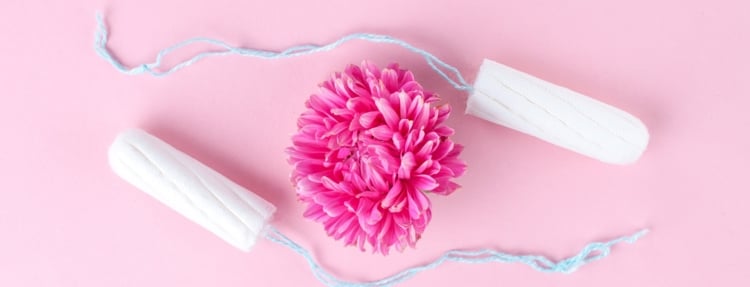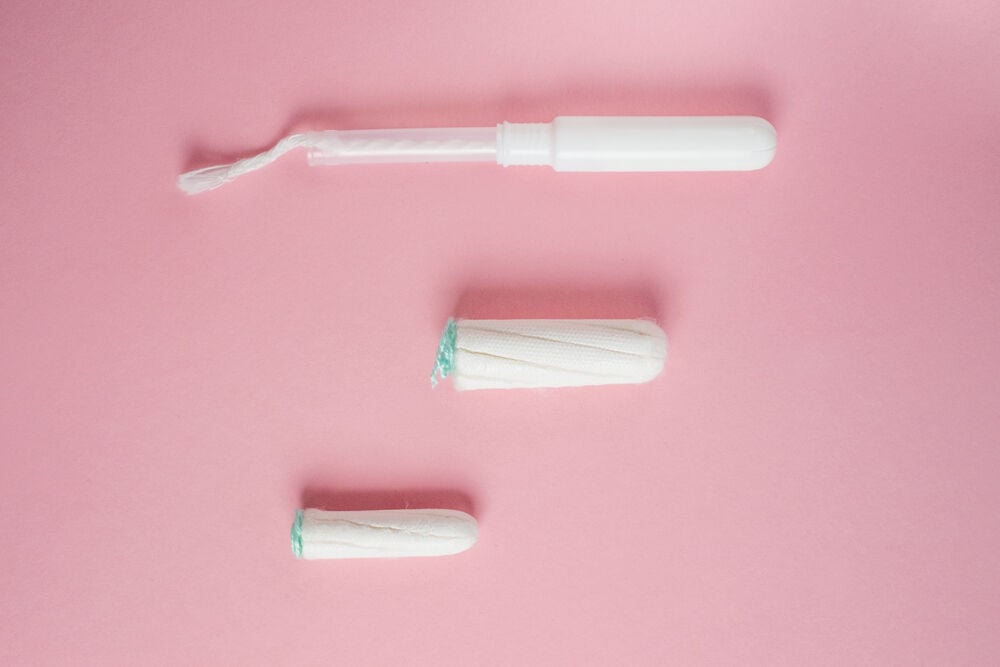Starting your period is part of a natural progression in life. It means your reproductive system is healthy! You might have a lot of questions about using tampons, and that’s totally normal. Often, people wonder at what age you can use tampons and how to use them. Let’s find out the answers to all these questions about tampons.
-
Tracking cycle
-
Getting pregnant
-
Pregnancy
-
Help Center
-
Flo for Partners
-
Anonymous Mode
-
Flo app reviews
-
Flo Premium New
-
Secret Chats New
-
Symptom Checker New
-
Your cycle
-
Health 360°
-
Getting pregnant
-
Pregnancy
-
Being a mom
-
LGBTQ+
-
Quizzes
-
Ovulation calculator
-
hCG calculator
-
Pregnancy test calculator
-
Menstrual cycle calculator
-
Period calculator
-
Implantation calculator
-
Pregnancy weeks to months calculator
-
Pregnancy due date calculator
-
IVF and FET due date calculator
-
Due date calculator by ultrasound
-
Medical Affairs
-
Science & Research
-
Pass It On Project New
-
Privacy Portal
-
Press Center
-
Flo Accuracy
-
Careers
-
Contact Us
How Old Should You Be to Use Tampons? Tips for First-Timers


Every piece of content at Flo Health adheres to the highest editorial standards for language, style, and medical accuracy. To learn what we do to deliver the best health and lifestyle insights to you, check out our content review principles.
How old do you have to be to use tampons?
You can start using tampons as soon as you get your period, which could be as young as 10 for some girls. What matters is your comfort level. Armed with accurate information, choosing whether and when to use a tampon is your personal decision.
Tampons can give you the freedom to continue activities such as swimming while you have your period. However, it’s important to learn how to insert them correctly. Some people may want to start using tampons right away, and others may prefer something else like pads. There are no wrong answers, and you are the best judge of which period products work for you.
There are a few myths about using tampons. Some people might be concerned that using tampons can cause them to lose their virginity. This isn’t true. Even if a tampon gently stretches your hymen, virginity is mostly a social concept that relates to sexual intercourse, not to hygiene products.

How to choose your first tampon
With so many options available, choosing your first tampon can be confusing. For beginners, using slender/light-flow tampons might be a good idea because they’re smaller and easier to insert. Once you get a sense of your regular monthly period flow, you’ll know if it’s heavier than what light tampons can absorb. In that case, you can switch to regular tampons. Let’s look at the available types.
Types of tampons categorized by menstrual flow:
- Slender/light – These tampons are made for people with a light flow. If you’ve only recently gotten your period, it might be a good idea to start by using slender or light tampons.
- Regular – These tampons absorb a normal flow and may also work well for beginners because of their smaller size.
- Super/high-absorbency – These tampons are specially designed for people with a heavy flow. Ideally, these should only be used if regular tampons are not sufficient and only on days with a heavy flow (usually, days one or two). These aren’t usually the best tampons for beginners since period flows are often light for the first few months.

Types categorized by applicator:
- No applicator – These tampons come without an applicator and are inserted using your fingers.
- Cardboard applicator – These tampons come with an applicator made of cardboard to help insert the tampon. They may feel rigid or uncomfortable for first-time users.
- Plastic applicator – Tampons with plastic applicators are more comfortable to use and slide easily into the vagina.
How to insert a tampon for the first time
Learning how to use a tampon might seem overwhelming at first, but this feeling is totally normal. Once you’ve inserted it properly, a tampon is painless, and you can’t feel it while moving around. Follow these step-by-step tips to understand how to insert a tampon:
- Relax. The more relaxed you are, the more easily the tampon will slide into the vagina.
- Choose a slender, small tampon to start. Once you’re comfortable inserting a tampon, you can move to a larger size depending on your flow.
- Stand or sit in a comfortable position. You might try crouching on a toilet or chair with one foot on the seat and the other on the floor. You can also lie on your back on a bed with your legs apart and knees up.
- Unwrap your tampon and extend the string fully. The string side should be pointing away from you.
- Hold the middle of the tampon between your thumb and finger.
- With your other hand, gently spread your vaginal lips open so that the tip of the tampon touches your vagina’s opening. The string should be visible and fully extended, with its end pointing away from your body.
- Gently but firmly push the tampon into your vagina, aiming slightly upward as you insert it. Hold the middle of the tampon with your index/middle finger.
- If you use a tampon without an applicator, you will eventually feel the tampon completely inside your vagina, and you won’t be able to push it in any further. Only the string will be visible outside of the vagina.
- If you are using an applicator, once the tampon (still inside its applicator) is inside your vagina, hold the outer tube in place while pushing the smaller, inner tube farther in using your middle or index finger. This will slide the tampon from the front of the tube into your vagina.
- Once the tampon is all the way inside the vagina, gently remove the inner and outer tubes of the applicator. Make sure the tampon string is hanging outside your vagina.
- You can dispose of the applicator in the trash. Do not flush the applicator down the toilet because it can create a clog.
To remove a tampon:
After four hours, it’s time to remove the tampon. Hold the string and gently but firmly pull the tampon slowly out of your vagina. Then, you can wrap it in toilet paper and throw it away. Tampons can easily clog a toilet, so don’t flush them!
Tips to keep in mind
Maintaining good period hygiene is important for your overall health. Keep the following tips in mind when using tampons.
- Choose tampons according to your flow: Don’t use a tampon for a higher flow than needed. If super-absorbent tampons are used for lighter flows, they can stick to the vaginal walls, causing tiny tears when you remove them.
- Change your tampon at least every four hours: It’s very important to change your tampon every four to eight hours. Leaving a tampon in for too long can increase your risk of toxic shock syndrome (TSS), a sudden and fatal bacterial disease.
- Use unscented tampons: Opt for unscented tampons without harmful chemicals that can interfere with your vagina’s delicate pH balance.
Deciding whether and when to start using tampons is a completely personal decision. There is no one right answer for how old you should be to use a tampon. They can be worn as soon as your periods start. You might want to begin with slender/light tampons and then move to more absorbent tampons if needed. It’s important to change your tampon every four hours to avoid leakage and the risk of toxic shock syndrome, a fatal bacterial infection. While it may feel a bit awkward to insert at first, a correctly placed tampon is painless and cannot be felt during activity.


Hey, I'm Anique
I started using Flo app to track my period and ovulation because we wanted to have a baby.


The Flo app helped me learn about my body and spot ovulation signs during our conception journey.


I vividly
remember the day
that we switched
Flo into
Pregnancy Mode — it was
such a special
moment.
Real stories, real results
Learn how the Flo app became an amazing cheerleader for us on our conception journey.
References
“Toxic Shock Syndrome.” Mayo Clinic, Mayo Foundation for Medical Education and Research, 18 Mar. 2020, www.mayoclinic.org/diseases-conditions/toxic-shock-syndrome/symptoms-causes/syc-20355384.
“Preparing Your Child for Menstruation.” Mayo Clinic, Mayo Foundation for Medical Education and Research, 11 Aug. 2020, www.mayoclinic.org/healthy-lifestyle/tween-and-teen-health/in-depth/menstruation/art-20046004.
“The Facts on Tampons—and How to Use Them Safely”, FDA
www.fda.gov/consumers/consumer-updates/facts-tampons-and-how-use-them-safely

